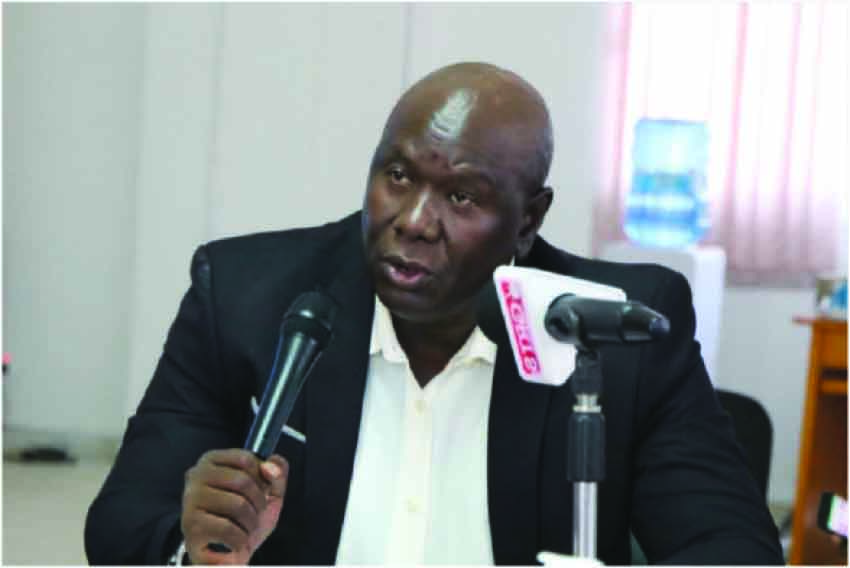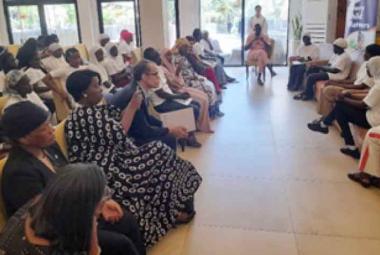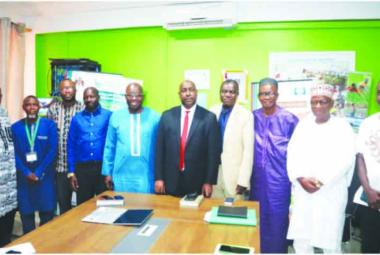By Kumba Leigh
Following cabinet’s recent approval of the newly formulated National Disaster Risk Management Policy (2024-2027), the Executive Director of the National Disaster Management Agency (NDMA), Mr Sanna Dahaba has explained to Gambia Daily the content and significance of the policy. “This is to ensure that The Gambia becomes resilient to shocks resulting from disasters, by placing in systems and structures that ensure that the nation is capable of minimising the negative effects of disasters,” he stated.
The specific objectives of the policy are to establish adequate, efficient and effective mechanisms to prevent new, and reduce existing disaster risks, reduce and establish an integrated and socially-inclusive mitigation measures that reduce the negative impact of disasters on lives and livelihoods, with a particular emphasis on vulnerable groups such as women, children, and the disabled.
Mr Dahaba assured that implementation of the policy shall be guided by synergy and complementarities whereby disaster risk management shall be an integral part of the national planning process, effectively mainstreamed and integrated in sector policies and regulations especially for key sectors such as environment, agriculture, forestry, land and infrastructure.
“Where such sector policies and regulation conflict with disaster management policies and principles, they shall be revised and aligned with principles and practices for effective disaster risk reduction,” he affirmed.
He noted that in the area of adaptability and inclusivity, as highlighted in the policy document, disaster risk reduction shall be broadened beyond the existing framework; mainly climate related, to include a much broader range of potential hazards including disease outbreaks (both human and animal), sanitation including waste management, transportation, and infrastructure especially river transport and other potential hazards; such as oil spill and dumping of toxic waste.
He said provisions will be made through the formulation and implementation of appropriate strategies and regulations to adapt and respond to emerging and re-emerging risk factors such as COVID-19, AKI, and any other potential hazards that the country may be faced with in the future.
He went on: “With innovation, disaster risk reduction policy, disaster risk reduction activities shall make use of innovative approaches and emerging digital technologies such as drone usage, arial mapping, and modern weather forecasting technologies. Disaster preparedness can be greatly enhanced by accurate weather forecasts on timing, scale and scope of potential risks. Response and recovery will benefit from use of drone technologies and arial mapping especially where disaster results in affected areas being difficult or hard to reach. The capacity of key NDMA, NEA, DWR, DoA, MECCNAR, and DoF to make use of such technologies shall be enhanced through training and provision of appropriate equipment needed.”
On priority areas, Mr Dahaba said disaster risk management shall involve all areas of the country, but specific attention will be given to areas designated as disaster prone. He however explained that these disaster hotspots may change over time and assessments are continuously being done to determine new and emerging areas that require attention. “A database of disaster-prone areas shall be kept, and the risk assessment will be the basis to update the data-base twice annually during dry and rainy seasons.”
The Executive Director pointed out that land areas designated as disaster risk or hotspots shall be clearly marked for easy physical identification and shall not be allocated for either housing or commercial purposes.
Social development, inclusion, and protection
Mr Dahaba noted that particular attention shall be paid to the social inclusion and protection of the most vulnerable population, including women, children, elderly, people with disabilities during and after disasters, and support to the most affected shall involve the assessments and identification of vulnerable populations including managing data at decentralised level to fasten response including post data collection engagement and verification.
Policy priority areas
Mr Dahaba explained that the policy has four main priority areas and these components are sub-divided into eight areas with detailed policy measures which incorporate proper early warning system that provides up-to-date and timely information on potential hazards, formulation and implementation of disaster contingency plans at local, regional and national levels and enhancing preparedness capacity.
While the second policy area will ensure timely and effective disaster response mechanisms and strategies to support recovery efforts and have planning instruments in place that support gender responsive implementation strategies and women’s decision making roles and leadership in disaster risk response management. The response mechanisms will entail use of rapid assessment systems that provide real time information on populations affected and the nature and scope of response needed, prepositioning supplies to enhance swift response and effective coordination of response efforts. Also detailed assessments will identify medium to long term recovery needs which shall be consolidated into a national recovery programme.
The NDMA boss finally noted that the establishment of effective governance arrangements, coordination mechanisms, and oversight frameworks is paramount. A robust governance framework, he said provides the necessary structure for decision-making, guiding the myriad stakeholders involved in disaster response and recovery. “Coordinated efforts, facilitated by clear mechanisms are essential to achieving a harmonised and efficient response to the multifaceted challenges posed by disasters. Oversight arrangements not only ensure accountability but also act as safeguard, assuring that the policy’s objectives are met, and resources are allocated judiciously.”







